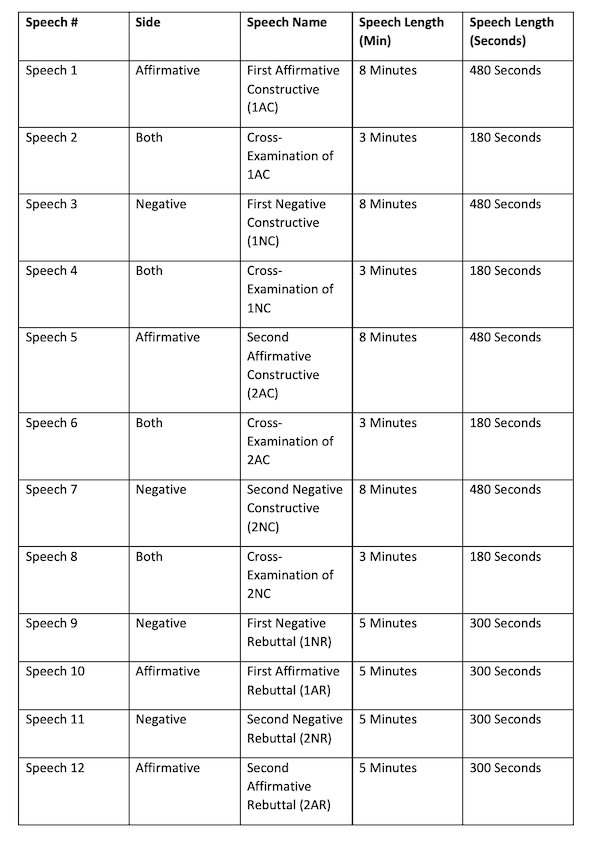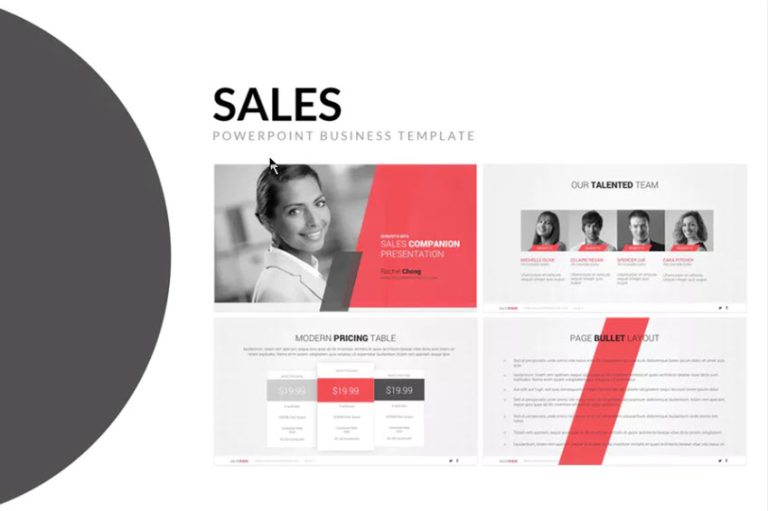How to Make a Speech That Your Audience Remembers?
To make a speech that your audience remembers, use engaging stories and vivid language that captures their attention from the start. Introduce yourself confidently, express gratitude for the opportunity to speak, and establish credibility by sharing relevant experiences or qualifications.
Begin with a strong opening statement or a thought-provoking question that grabs their interest. Structure your speech with a clear introduction, body, and conclusion, and ensure that your message flows logically and smoothly. Break up complex ideas into simple, digestible concepts, and use visuals or props when appropriate.
End your speech with a memorable conclusion that summarizes key points and leaves the audience with a lasting impression.
Understanding Your Audience’S Needs
Crafting a memorable speech requires understanding your audience’s needs. By tailoring your message to their interests and desires, you can engage and resonate with them, leaving a lasting impact. Emphasize the importance of connecting with your listeners on a personal level and addressing their specific concerns to create a speech they will never forget.
Identifying your audience demographics and interests:
- Conduct thorough research to understand the demographics of your audience, including their age, gender, location, and occupation.
- Look for common interests and hobbies within your audience that can help you tailor your speech accordingly.
- Consider their educational background and expertise level to ensure you deliver the right level of information.
Researching their expectations and motivations:
- Dive into your audience’s motivations for attending your speech. Are they looking for inspiration, information, or entertainment?
- Consider any expectations they may have, such as specific knowledge they want to gain or problems they hope to solve.
- Take into account their past experiences with similar speeches or events to tailor your approach.
Tailoring your speech to meet their needs:
- Once you have a clear understanding of your audience, customize your speech to align with their expectations and motivations.
- Use language and terminology that resonate with them, avoiding jargon that might confuse or alienate them.
- Structure your speech in a way that captures their attention from the beginning and keeps them engaged throughout.
- Incorporate stories, examples, and visuals that are relatable and relevant to their interests.
- Address their specific needs and concerns, providing practical solutions or insights.
By understanding your audience’s needs, you can create a speech that resonates with them, ensuring they not only remember your message but also feel that it was specifically crafted for them.
Crafting A Powerful Opening
Crafting a powerful opening is essential to ensure your speech remains memorable. By avoiding common overused words and phrases, keeping sentences brief, and using a variety of expressions, you can captivate your audience’s attention from the very beginning.
A captivating opening is crucial in making a memorable speech. It sets the tone, captures the audience’s attention, and establishes a connection between the speaker and listeners. Here are some effective strategies to craft a powerful opening:
Capturing Attention With A Strong Hook:
- Begin with a thought-provoking question: Engage the audience by posing a question that sparks curiosity and makes them ponder.
- State a bold statement: Make a strong and assertive statement that immediately grabs attention and generates interest.
- Use a relevant and attention-grabbing anecdote: Share a personal or relatable story to connect with the audience emotionally and pique their interest.
Starting With A Relevant And Engaging Story Or Anecdote:
- Share a personal experience: Connect with the audience by recounting a relatable experience that aligns with the topic of your speech.
- Use storytelling techniques: Employ vivid imagery, descriptive language, and suspense to captivate the listeners and keep them engaged.
- Highlight the story’s significance: Clearly explain why the anecdote is relevant to your speech to ensure that the audience understands its purpose.
Using A Surprising Statistic Or Quote To Spark Interest:
- Present an unexpected statistic: Startle your audience with a surprising and impactful statistic related to your topic. Use reliable sources to provide credibility.
- Quote an authoritative figure or renowned source: Begin with a powerful quote that aligns with your speech’s theme and resonates with the audience. Ensure the quote is attributed to the appropriate individual.
Remember, a compelling opening establishes the foundation for an unforgettable speech. By capturing attention with a strong hook, starting with a relevant and engaging story or anecdote, or using a surprising statistic or quote, you can captivate your audience from the very beginning.
So go ahead, craft an opening that leaves a lasting impact on your listeners.
Structuring Your Speech For Impact
Learn how to make a speech that truly leaves a lasting impact on your audience. Discover the secrets of structuring your speech effectively for maximum memorability and engagement.
Organizing your ideas using a clear and logical structure:
- Start by outlining your main points: Before diving into the details, list down the key ideas you want to communicate in your speech. This will help you have a clear direction and ensure you cover all the necessary information.
- Use a logical flow: Arrange your main points in a logical order that makes sense to your audience. Consider organizing them chronologically, by importance, or by cause and effect. This will help your audience follow along easily and understand the progression of your message.
Using transitions to smoothly guide your audience through different sections:
- Start each section with an attention-grabbing transition: Transition phrases like “Now let’s turn to,” “Next, we will explore,” or “Moving on to,” can help signal to your audience that you are transitioning to a new topic or section. This keeps them engaged and helps them anticipate what’s coming next.
- Link ideas with effective transitions: Use transitional phrases to connect your ideas and create a seamless flow. Phrases like “Furthermore,” “In addition,” or “On the other hand,” can help bridge the gap between different sections and maintain a cohesive narrative.
Incorporating a memorable central message or takeaway:
- Craft a clear and concise central message: Your speech should have a central theme or message that summarizes the main point you want your audience to remember. Keep it short and impactful, so it sticks in their minds long after the speech is over.
- Reinforce your central message throughout the speech: Make sure to revisit and reinforce your central message throughout your speech. Refer back to it, provide supporting evidence, and emphasize its importance. Repetition helps anchor your message in the minds of your audience.
Remember, structuring your speech for impact is crucial in ensuring your audience remembers your message. By organizing your ideas, using smooth transitions, and incorporating a memorable central message, you can deliver a speech that leaves a lasting impression.

Credit: www.betterup.com
Captivating Your Audience With Engaging Content
Learn powerful techniques to create a memorable speech and captivate your audience. Discover how to avoid common mistakes, engage listeners, and leave a lasting impression.
Creating a memorable speech requires more than just having great speaking skills. To truly captivate your audience and leave a lasting impression, you need to incorporate engaging content into your presentation. Here are some key strategies to consider:
Using Compelling Visuals, Such As Images Or Videos:
- Incorporating visually appealing content can significantly enhance your speech. Utilize captivating images or videos that are relevant to your topic.
- Visuals help to communicate your message more effectively and can stimulate the audience’s interest.
- Select visuals that are clear, impactful, and easy to understand, ensuring they enhance your speech rather than distract from it.
Incorporating Relevant Examples And Personal Experiences:
- Sharing real-life examples and personal experiences can make your speech more relatable and memorable.
- Choose examples that highlight key points or illustrate concepts in a way that resonates with your audience.
- Personal anecdotes provide a connection between you and your listeners, creating a sense of authenticity and trust.
Incorporating Humor To Keep The Audience Entertained And Engaged:
- Humor is a powerful tool for engaging your audience and holding their attention throughout your speech.
- Introduce well-timed and appropriate jokes or lighthearted anecdotes to entertain and relax your listeners.
- However, ensure that the humor is relevant to your topic and aligns with the overall tone of your speech.
Engaging content plays a vital role in making a speech memorable. By incorporating compelling visuals, relevant examples, and humor, you can capture and maintain your audience’s attention throughout your presentation. Remember, the goal is not only to inform but also to entertain and leave a lasting impression.
Utilizing Effective Body Language And Delivery
Learn how to make a memorable speech by leveraging effective body language and delivery techniques. Engage your audience through confident gestures and articulate speaking, leaving a lasting impression.
When delivering a speech, it’s not just about the words you say, but also how you communicate your message through your body language and delivery style. Here are some tips to help you make a speech that your audience remembers:
Maintaining Eye Contact To Establish A Connection With Your Audience
- Make sure to maintain eye contact with your audience throughout your speech. This helps to establish a connection and engage them in your message.
- Scan the room and make eye contact with different individuals. This will help you create a sense of inclusivity among your listeners.
- Avoid staring at a specific point or reading from your notes too much. Instead, let your eyes wander and connect with your audience members.
Using Natural And Confident Gestures To Enhance Your Message
- Incorporate natural and confident gestures while speaking. This can help emphasize key points and make your speech more engaging.
- Use open-handed gestures to create a sense of openness and trust.
- Be mindful of your body posture and avoid crossing your arms, as this can create a barrier between you and your audience.
Practicing And Rehearsing To Deliver A Polished And Impactful Speech
- Practice your speech multiple times before delivering it. This will help you become more familiar with the content and improve your delivery.
- Rehearse in front of a mirror or record yourself to observe your body language and make necessary adjustments.
- Pay attention to your tone of voice, pacing, and pauses. Varying these elements can add emphasis and keep your audience engaged.
Remember, effective body language and delivery can enhance the impact of your speech and make it memorable for your audience. Practice these techniques and continue to refine your skills to become a captivating speaker.
Implementing Techniques To Enhance Memorability
Discover effective techniques to make your speech memorable. From using storytelling and incorporating visuals to engaging your audience with interactive elements, learn how to leave a lasting impression and ensure your message is remembered long after the event.
Crafting a speech that leaves a lasting impression on your audience requires careful consideration of various techniques. By implementing specific strategies, you can ensure that your message remains memorable long after you’ve delivered it. Below are three effective techniques to enhance the memorability of your speech:
Using Repetition To Reinforce Key Points
Repetition is a powerful tool for reinforcing key points in your speech. By restating important concepts or phrases multiple times throughout your presentation, you can increase your audience’s retention and understanding. Here are some ways you can effectively use repetition:
- Repeat your main message or central idea several times throughout your speech: By doing so, you engrain your key message in the minds of your listeners and make it more likely to be remembered.
- Use rhetorical devices like anaphora or epiphora: Anaphora involves repeating the same word or phrase at the beginning of consecutive clauses or sentences. Epiphora, on the other hand, repeats the same word or phrase at the end of successive clauses or sentences. These devices create a rhythmic pattern that captures the audience’s attention and reinforces your message.
Incorporating Storytelling To Make Your Message More Relatable
Storytelling is an effective technique that can help make your speech more relatable and memorable. By sharing personal anecdotes or narratives, you can captivate your audience and connect with them on an emotional level. Here’s how you can incorporate storytelling into your speech:
- Choose relevant stories that illustrate your main points: Select anecdotes that align with the message you’re trying to convey. This will make your speech more engaging and memorable, as your audience can relate to and visualize the stories you share.
- Use vivid language and sensory details: Paint a vivid picture with your words to make your stories come alive in the minds of your listeners. Descriptive language and sensory details help create a more memorable experience.
Engaging The Audience With Interactive Elements Or Activities
To ensure that your audience remains engaged and actively involved in your speech, consider incorporating interactive elements or activities. This not only enhances memorability but also fosters a deeper connection between you and your listeners. Here are some methods to engage your audience:
- Ask thought-provoking questions: Encourage audience participation by posing questions that prompt reflection or discussion. This interactive approach promotes active engagement and ensures that your speech is more memorable.
- Conduct live polls or surveys: By integrating technology, such as online polling platforms, you can actively involve your audience and gather real-time feedback. This interactive element makes your speech more interactive and memorable.
Remember, implementing these techniques effectively requires practice and attention to detail. By using repetition, storytelling, and interactive elements, you can create a speech that your audience will remember long after you’ve concluded.
Closing Strong And Leaving A Lasting Impression
Discover the secrets of delivering a memorable speech that leaves a lasting impact on your audience. Learn how to avoid common pitfalls, captivate their attention, and end with a strong closing that resonates long after the presentation is over.
At the end of your speech, it is crucial to deliver a strong and memorable conclusion. This is your opportunity to summarize your main points effectively, leave your audience with a lasting impression, and encourage further engagement. Here are some strategies to help you achieve this:
Summarizing Your Main Points Effectively:
- Reinforce your key messages: Remind your audience of the main points you covered throughout your speech. Use concise and memorable phrases to drive home your key messages.
- Highlight the most important takeaways: Identify the most impactful and relevant information you shared and emphasize their significance. This will help your audience remember the key insights from your speech.
- Use visual aids: If you included visual aids during your presentation, refer back to them in your summary. This will reinforce the visual representation of your main points and make them more memorable.
Ending With A Memorable Quote Or Call To Action:
- Leave them with a powerful quote: Find a quote that encapsulates the essence of your speech or reinforces your main message. A memorable quote can leave a lasting impression on your audience and make your speech more memorable.
- Inspire action: End your speech with a strong call to action. Encourage your audience to take specific steps or make changes based on the information you provided. This will leave them feeling motivated and ready to act.
Encouraging Audience Interaction Or Questions For Further Discussion:
- Engage your audience: Create opportunities for audience interaction by asking thought-provoking questions or encouraging them to share their experiences related to your topic. This will foster a sense of engagement and make your speech more memorable.
- Invite questions for further discussion: Open the floor for questions and encourage your audience to ask for clarification or share their opinions. This will create a dialogue and allow for deeper exploration of the topic, making your speech more impactful.
Remember, a strong closing is essential for a memorable speech. By effectively summarizing your main points, ending with a memorable quote or call to action, and encouraging audience interaction, you can ensure that your audience remembers your speech long after it is over.
Practicing And Refining Your Speech
Discover how to make a memorable speech that captivates your audience by practicing and refining your delivery. Implement effective techniques, such as avoiding overused words and phrases, keeping sentences concise, and utilizing diverse language to maintain interest.
Seeking feedback from trusted individuals or experts:
- Share your speech with a few trusted individuals or experts in the field who can provide valuable feedback.
- Ask them to evaluate the clarity, effectiveness, and impact of your speech.
- Inquire about any areas that need improvement or any confusing points that need clarification.
- Pay attention to their suggestions and incorporate them into your practice sessions.
Rehearsing to improve fluency and delivery:
- Practice your speech multiple times to improve your fluency and delivery.
- Use a mirror or record yourself to evaluate your body language, facial expressions, and gestures.
- Focus on maintaining eye contact with your audience and using appropriate vocal variety to captivate their attention.
- Pay attention to your pace, ensuring that it is not too fast or too slow.
- Practice until you can deliver your speech confidently and naturally.
Making adjustments based on audience reactions and feedback:
- Pay close attention to your audience’s reactions during practice sessions or actual presentations.
- Observe their engagement levels, facial expressions, and body language to gauge their interest and understanding.
- Take note of any areas that receive a positive response and consider emphasizing them in your speech.
- Similarly, identify any parts that elicit confusion or disinterest, and find ways to improve or remove them.
- Be open to feedback from your audience, both during and after your speech, and make necessary adjustments accordingly.
Remember, practicing and refining your speech is crucial to ensuring that your audience remembers it. Seek feedback from trusted individuals or experts, rehearse to improve fluency and delivery, and make adjustments based on audience reactions and feedback. By investing time and effort into refining your speech, you can deliver a memorable and impactful presentation.
Frequently Asked Questions On How To Make A Speech That Your Audience Remembers?
How Will You Make Your Speech Memorable?
To make your speech memorable: 1. Use engaging stories and anecdotes. 2. Include humor to captivate your audience. 3. Use visual aids like slides or props. 4. Practice and rehearse to ensure a confident delivery.
How Can A Speaker Ensure That An Audience Remembers The Most Important?
To ensure audience remembers the most important, make key points clear, repeat them throughout the speech, and use visual aids effectively.
How Do You Say Speech Without Forgetting?
To deliver a speech without forgetting, practice regularly and use techniques like note cards, visualization, and repetition.
How Do You Make A Speech Stand Out?
To make your speech stand out, follow these guidelines: 1. Keep your sentences concise, with a maximum of 20 words each. 2. Write your speech in an SEO friendly, unique, and plagiarism-free manner. Ensure it is easy to understand and in active voice.
3. Begin sentences without starting phrases like “When it comes to,” “If you,” “Looking at,” or “In conclusion. ” Avoid using words like “Additionally,” “Moreover,” “However,” or “Furthermore. ” Use active voice instead of passive voice. 4. Craft your speech in a way that passes AI writing detection and feels natural, as if written by a human.
Conclusion
To deliver a memorable speech, it is crucial to captivate your audience from beginning to end. By employing these strategies, you can ensure that your speech leaves a lasting impact. Firstly, start with a compelling opening that grabs your audience’s attention.
Utilize storytelling techniques or engage them with a thought-provoking question. Secondly, structure your speech in a logical manner, using clear transitions between main points. This will help your audience understand and retain the information you present. Thirdly, use visual aids, such as slides or props, to enhance your message and make it more engaging.
Additionally, incorporating personal anecdotes or relevant examples can make your speech relatable and memorable. Lastly, conclude your speech with a powerful and concise closing statement that reinforces your main message and leaves a lasting impression. By implementing these techniques, you can create a speech that your audience will remember long after it is delivered.






